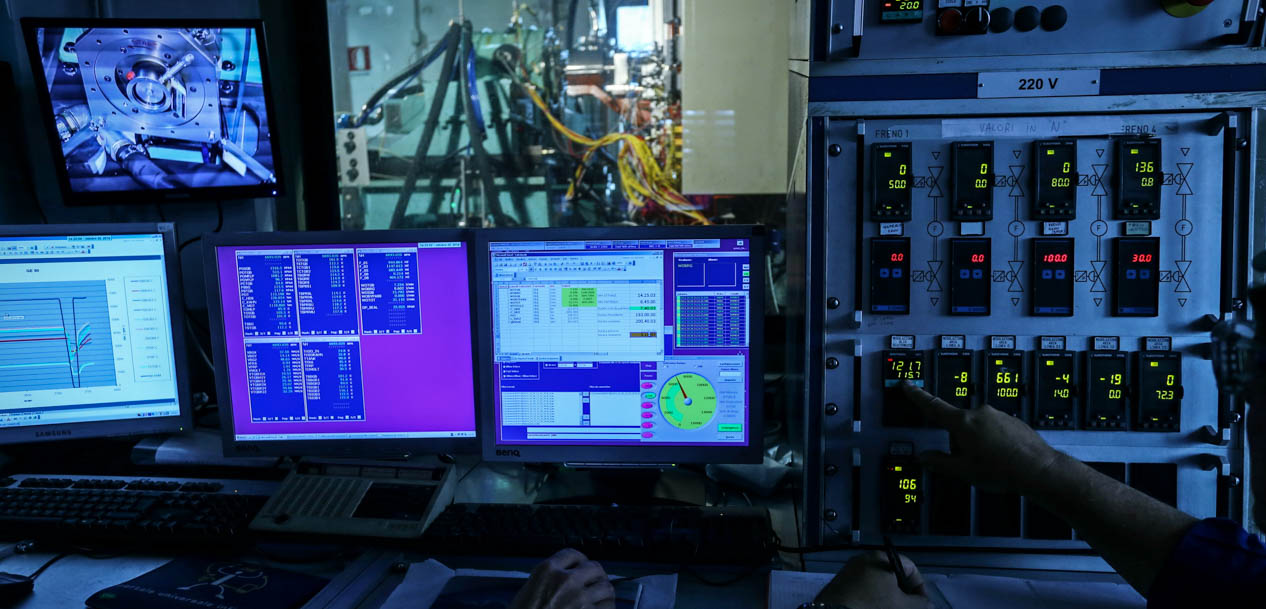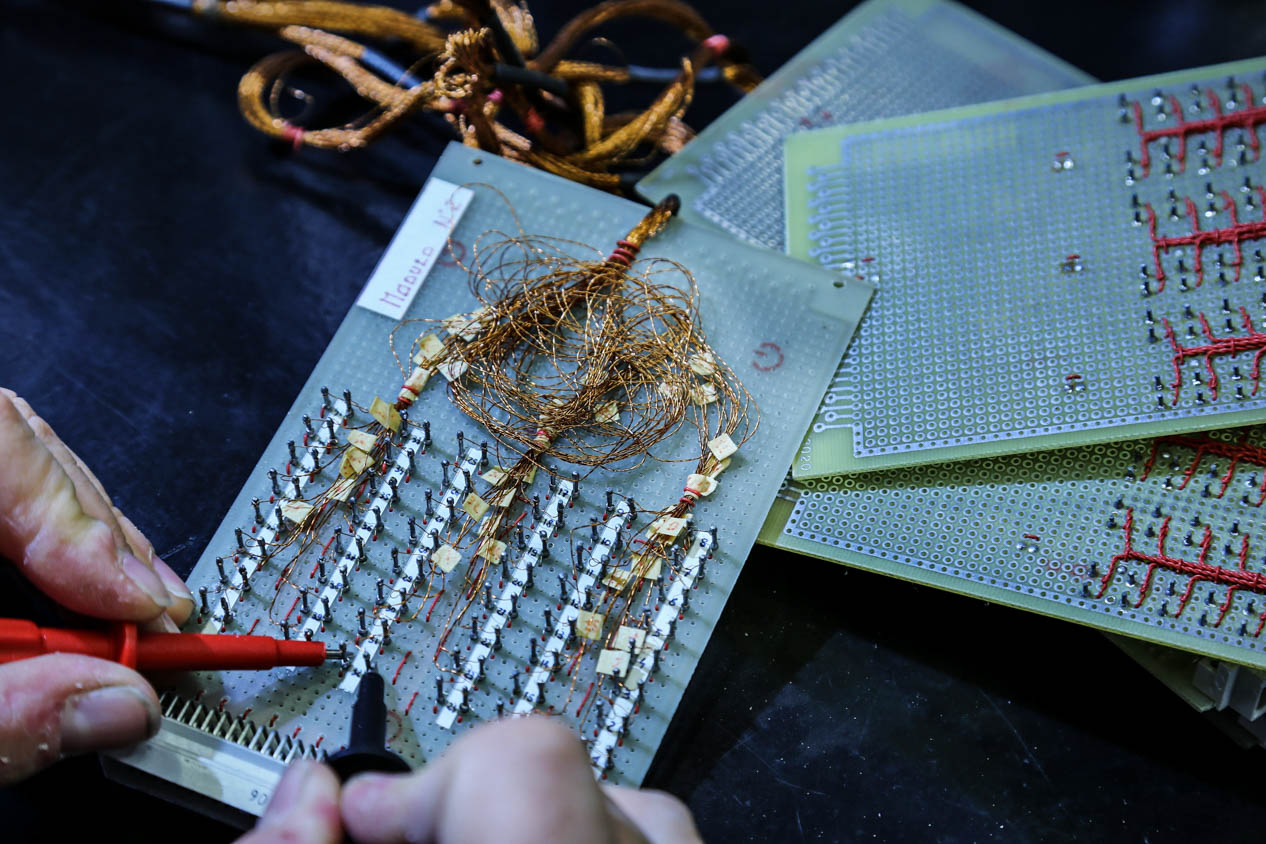Invent
Sounds good!?
Capture and analyse the sounds coming from inside an aircraft engine thanks to refined sensors and advanced prognostics systems to make the future of flight even safer and more reliable.
Sep 2018
"In everyday life, we can find ourselves making diagnoses using our senses : we can detect potential diseases by checking symptoms. Likewise, the vibrations of a machine generate certain sounds, or vibratory emissions, depending on its operating condition and mechanical state: detecting them clearly is one of the most effective methods for working out when something is not working properly. To do this, we develop skills and testing processes to match those that occur naturally in our ears and brains.” This is how Paolo Calza, Avio Aero Systems Design Technologies Manager, explains the ideas behind his team's work.
In fact, almost all of us do this: when we stop to check the car if it gets too noisy or when we oil the hinges of squeaky doors. We are usually surrounded by sounds that we measure and process and that we record inside our minds, categorising them by type and intensity. When we perceive unexpected, strange or suspicious sounds, we understand that something is not right.
In addition, we are able to train and educate our hearing to make it even more efficient. For example, we tune musical instruments, doctors use stethoscopes to refine their respiratory and cardiac examination skills; in the same way, engineers who test aircraft engines (or engine components) can immediately stop the test before a serious failure if they hear a suspicious noise.
The challenge undertaken by Paolo Calza, and by the whole team, is to improve the reliability of machines and computers that can detect such sounds and prevent "incipient failures". The development of Prognostics and Health Monitoring (PHM) monitoring systems has grown in importance in recent decades, especially in the aviation sector.
"The PHM processes applied in the vibro-acoustic field are based on the comparison of signals, just as we do in our minds," says Federica D'Onofrio from the Edison Engineering Development Program, part of Calza’s team. "Computers can be taught how to do this by training machines to obtain information on potentially abnormal conditions. In short, the current systems comprise a series of accelerometers positioned at significant points on aircraft engine parts to monitor the characteristics of the vibration signal and allow potential problems to be detected”. The difficult thing, therefore, is to capture the smallest symptoms in the so-called "vibratory signature" - which is the graphical representation of the signal - as soon as possible in order to be able to take prompt action.
“There are many advantages in the aeronautical field, specifically relating to safety, airworthiness checks and cost reduction, thanks to Condition Based Maintenance (predictive maintenance based on the current effective condition, ed. ). Our customers have great interest in this technology," says Calza.
In parallel, Health and Usage Monitoring (HUMS) systems in helicopters provide a good example of application oncomponents such as mechanical drives . These systems have been used since the early 1980s and have widespread because they improve aircraft safety. But such systems can be further improved, considering that current PHM tools are not always sufficiently sensitive.
Indeed, the latest developments suggest that the systems can be significantly improved with an extensive and in-depth understanding of the dynamic characteristics of the components. Avio Aero has been working along these lines, as a specialist with a huge amount of experience in the design and production of essential components and modules for aeroplane engines. "We know how to 'listen' to our transmissions and we can use our resources to develop and validate ever more advanced and robust systems," says Calza.
During the recent tests on the GE90 transmission at the Sangone centre (Turin, Italy) , the team was able to simulate incipient failures and measure their development with high frequency sensors (proximity meters, accelerometers and microphones). Following the tests, there was a demonstration of the ability of some advanced algorithms, currently in development, to perform early diagnoses according to real-time trends in the vibration signature and some related indicators. "This really galvanized us and pushed us on to seek a wider scope of application and increased capabilities for future PHM systems,” tells Alessandra Torri, PHM Projects manager.
The current active projects in this sector have some importance even at the European research level - for example i-GEARas part of Clean Sky 2 - and are aimed at accelerating and finalising the implementation of these monitoring and prognostics systems. "In conclusion, we aim to detect whether there is an anomaly in the most timely and reliable manner possible," Torri continued.
The digital transformation of health-monitoring can already be seen with smartwatches and applications that monitor our physical parameters. “The Digital Era fosters more extensive and successful application for aeronautical transmissions,” says Luca Ronchiato, System Gear Dynamics Senior Engineer , who oversees the digitisation of these systems. "Data transfer and analysis is so fast that real-time remote monitoring is possible and even sharing on Predix ( GE's industrial cloud, ed. ) can help us increase the effectiveness of the algorithms. Finally, the more innovative wireless sensors also allow for less invasive and more flexible installation on the parts of the engine.”
It is also true that in the aviation sector, the engineering profession (or mission) can elevate be raised to the level of medicine, as Calza says dryly, "if transmissions are in one way the heart of flying, we can say that we now know how to listen to the heartbeat of an aviation engine.”







